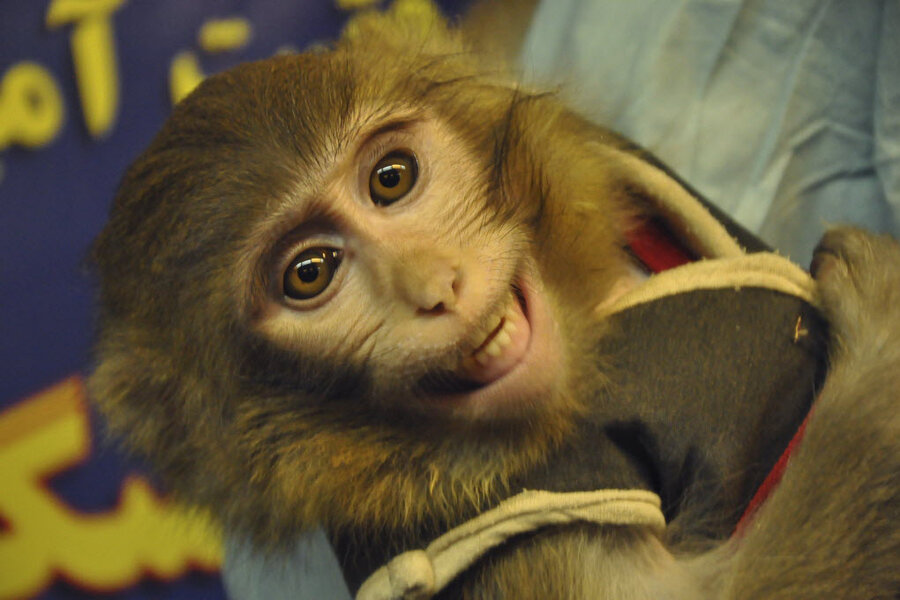Iran sends second monkey to space
Loading...
| Tehran, Iran
Iran said Saturday it has successfully sent a monkey into space for a second time, part of an ambitious program aimed at manned space flight.
Iran's state TV said that the launch of the rocket dubbed Pajohesh, or Research in Farsi, was Iran's first use of liquid fuel and reached a height of 72 miles. It said the monkey, named Fargam or Auspicious, was returned to earth safely.
The TV showed the rocket blasting off and then showed the monkey, strapped snugly into a seat, staring at people clapping to celebrate its safe return. The report said Fargam's capsule parachuted safely to earth after detaching from the rocket in a mission that lasted 15 minutes.
Iran frequently claims technological breakthroughs that are impossible to independently verify. The Islamic Republic has said it seeks to send an astronaut into space as part of an ambitious aerospace program.
"The launch of Pajohesh is another long step getting the Islamic Republic of Iran closer to sending a man into space," the official IRNA news agency said.
State TV said scientists were able to monitor and measure signals coming from the rocket, including Fargam's vital signs, during the flight.
Iran said that it sent its first monkey into space in January, reaching the same height of 120 kilometers (72 miles).
For Iran, its aerospace program is a source of national pride. It's also one of the pillars of Iran's aspirations to be seen as the technological hub for Islamic and developing countries.
The U.S. and its allies worry that technology from the space program could also be used to develop long-range missiles that could potentially be armed with nuclear warheads.
In the January mission, one of two official packages of photos of the simian space traveler depicted the wrong monkey, causing some international observers to wonder whether the monkey had died in space or that the launch didn't go well.
But Iranian officials later said one set of pictures showed an archive photo of one of the alternate monkeys. They said three to five monkeys are simultaneously tested for such a flight and two or three are chosen for the launch. Finally, the one that is best suited for the mission and isn't stressed is chosen for the voyage.
The Islamic Republic has not revealed where the rocket launch took place, but it has a major satellite launch complex near Semnan, about 125 miles east of Tehran.
Iran says it wants to put its own satellites into orbit to monitor natural disasters in the earthquake-prone nation, improve telecommunications and expand military surveillance of the region.







